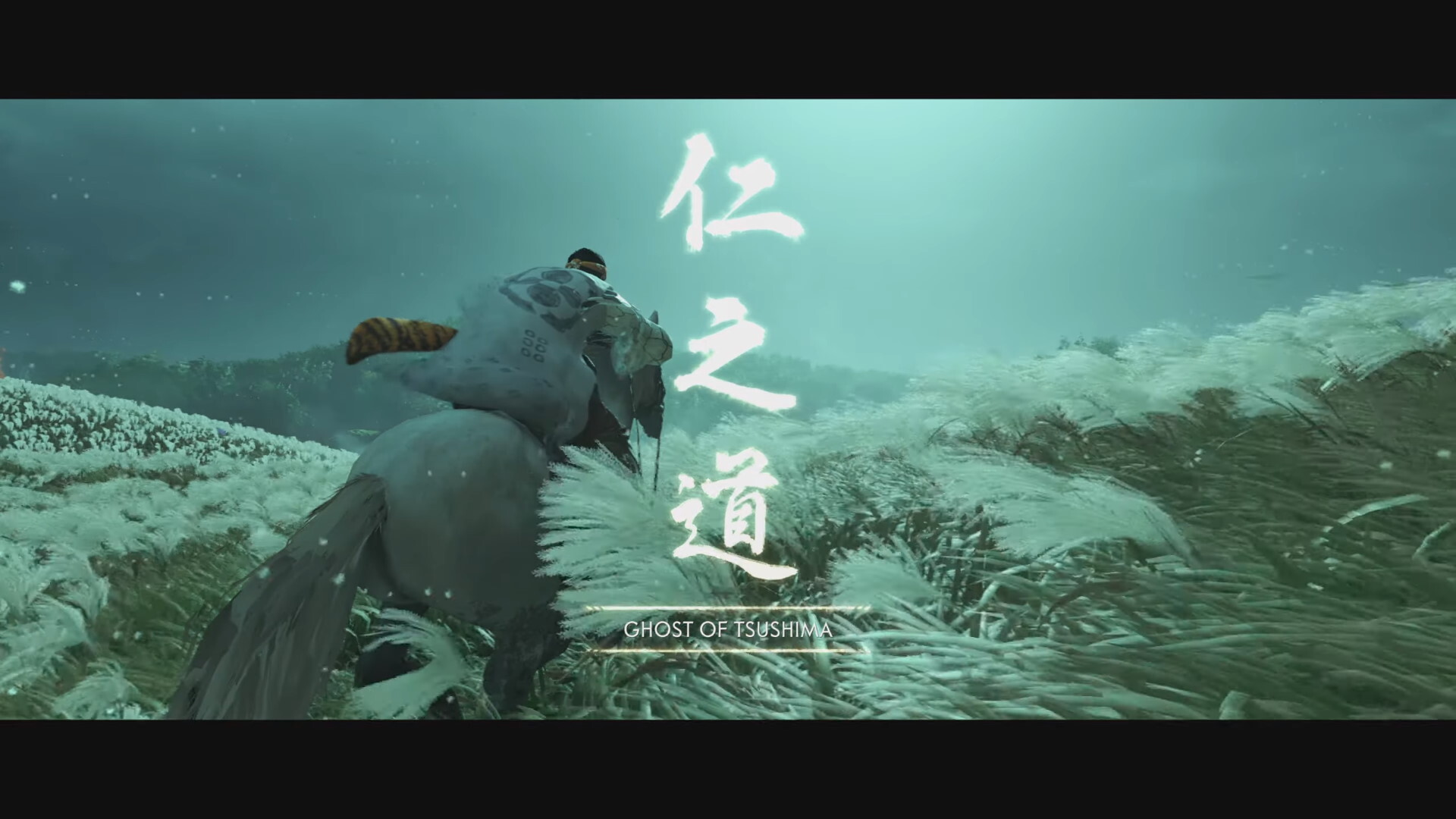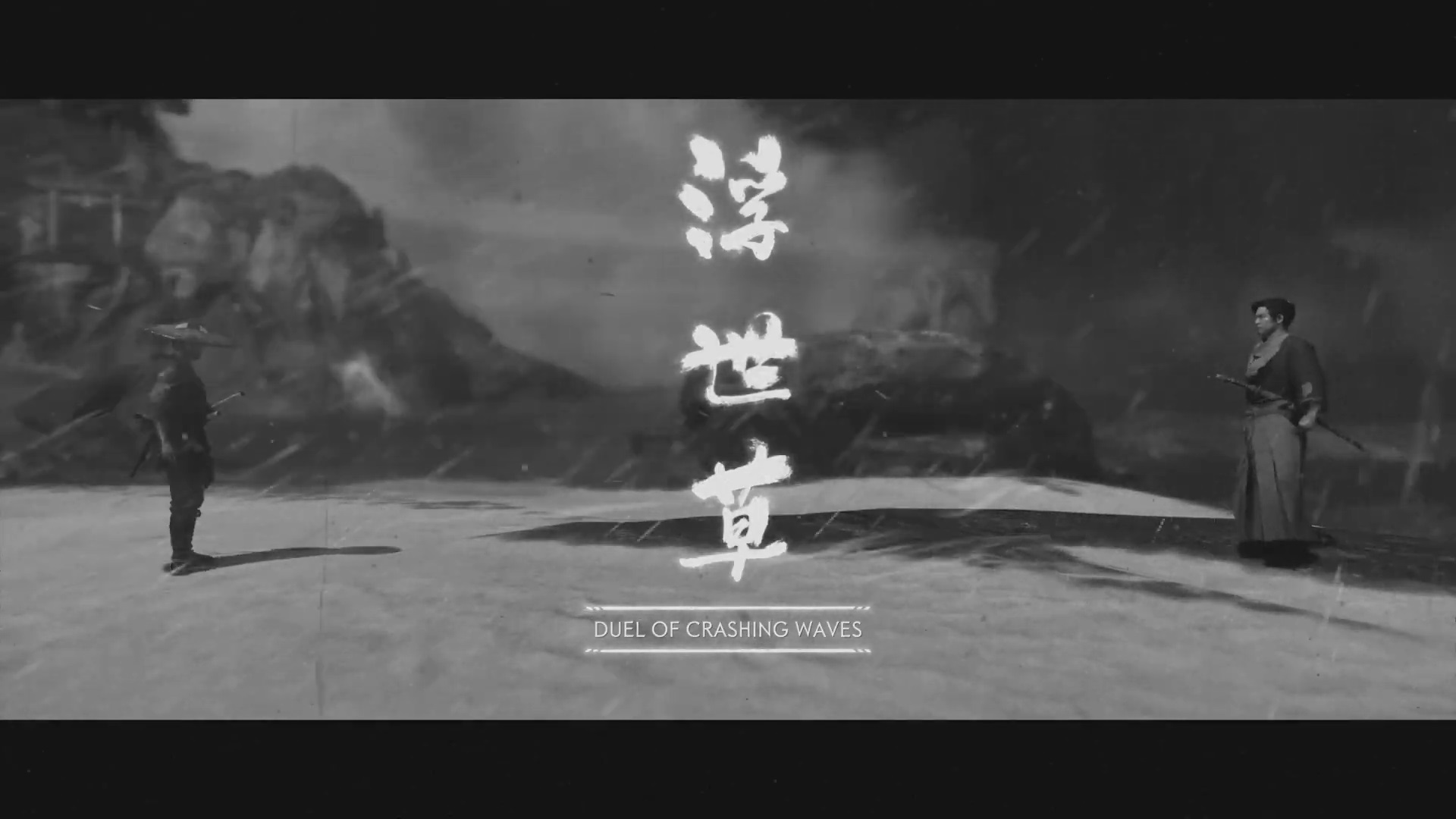16 biggest things we learned from the Ghost of Tsushima gameplay trailer
From combat to exploration, we got a lot of info on Ghost of Tshushima gameplay
We finally have some fresh Ghost of Tsushima gameplay, and Sucker Punch didn't disappoint with a staggering 18 minutes of in-depth developer-led footage, outlining all sorts of in-game details including exploration, combat, customisation, photo mode, and even cute little foxes that'll help our hero Jin discover more of the world. To help you eke out all the information, we've got through the footage frame by frame and we're here to bring you the 16 biggest things we learnt from the Ghost of Tsushima State of Play, which you can also watch above.
1. The UI is gone and instead, the world tells you where to go

The Ghost of Tsushima is a huge and beautiful open world so it would be a shame to spoil it with the usual maps, compasses and objective markers. That does obviously leave you with the problem of knowing where to go? Sucker Punch has got around that by seeding the info you need to find missions, places and goals into the world itself. For example, if you pick a mission a ‘guiding wind’ will show you the way; swirling wafts of air spiral across the screen, carrying leaves in the direction you need to head. That obviously covers destinations you already know about but Tsushima also uses its environment to tell you about places you don’t know about yet. If an odd-shaped tree or other landmark stands out it’s probably because there’s something there of interest to check out. Smokestacks on the horizon will direct you to points of interest and even animals can help out. So far we’ve seen birds fluttering into your eyeline, leading you to people, while foxes will take you to shrines.
2. There are random events

There’s a blink and you miss it moment early in the recent gameplay reveal where Jin rides past a bear attack. The beast can be seen batting two people through the air in the tall grass and it suggests there might be a few Far Cry random events to break up your journey as you travel around. Given a focus on how Jin is perceived and his reputation we’ll take a guess there will be a few different things that can happen that might lead to simple rewards, larger missions, or just a ‘+1 totally rode past and let that guy get eaten’.
3. Combat is all about precision, parrying and brutal deathblows

As a samurai fighting is about precision rather than button mashing (although that looks to be an option). Elegant parries and dodges can open up enemies for a single killing blow and timed well you can eliminate multiple bad guys with single-precision hits. There’s also an enemy parry bar which you can deplete with repeated attacks leaving enemies staggered and defenseless. There’s a whiff of Star Wars Jedi: Fallen Order’s lighter take on SoulsBorne’s fighting, but with a more speedy action feel. And, if your enemies give you a good fight there’s the option to bow over their corpse afterwards.
4. Standoffs let Jin challenge enemies to impromptu duels

If you prefer the direct and honorable approach, Ghost of Tsushima will let you take on opponents one-on-one with a special Standoff system. This goes beyond story-dictated duels and lets you live that samurai life even in moment-to-moment battles. In the gameplay reveal, we saw Jin approach a Mongol shipyard on foot, then challenge one of the guards to a Standoff. The camera cut to show the two combatants approaching one another, then zoomed in with a cinematic letterboxing effect. The whole thing only took a few seconds, but it still made for a very dramatic start to the assault. Keep in mind that any other enemies in the area won't really care about sticking to the honorable terms of the duel after they see you slaughter their friend.
5. Stances help Jin take on different kinds of enemies

When facing off against one opponent with a saber, Jin switched from Stone Stance to Water stance. Different stances will inflict more damage against certain enemy types, and you can see them reflected immediately as they change the way Jin holds his sword and strikes: Water Stance sees him hold his blade horizontally in front of his face, while Stone Stance keeps his sword vertical, high and back. You can swap between Stances by pressing the face buttons - there are at least three of them, though we didn't get to see what the third was in this video.
6. There are combat and stealth options but your journey is ultimately to become The Ghost

The two options we’ve seen so far - direct combat and stealth - seem interchangeable and it’s not clear whether you’ll be encouraged to tune your playstyle to one of the other. However, we know that ‘as your legend grows you’ll develop all new techniques that transform Jin from a samurai into the ghost’. While the developers seem to pitch the ghost play style as dishonorable and full of dirty tricks, it looks like there’s a reason that’s the title of the game. As you play you’ll be developing your reputation and, in turn, unlocking charms and abilities that gradually change you into The Ghost of Tsushima.
Sign up to the GamesRadar+ Newsletter
Weekly digests, tales from the communities you love, and more
7. Play as a stealthy ‘ghost’ and you can terrify enemies

While direct combat looks elegant and satisfying, you can also play stealthy Although this is described as ‘dishonourable’, using dirty tricks to tip the odds in your favor. These methods include things like throwing wind chimes to distract enemies and lead them away for a stealth kill, or using smoke to blind them and leave them exposed to attack. You can also chain assassinations, using things like firecrackers to draw enemies into one area. And, even if you do get caught, it can still play in your favor with Kunai throwing darts a quick option to drop nearby foes. And if you do enough, the survivors will be too terrified to fight, leaving you to just mop them up as they cower.
8. Jin has plenty of weapons in his arsenal

As you'd expect from a badass samurai, our hero Jin has plenty of tools to take down the Mongol invasion. In this 18 minutes of gameplay alone, we're treated to quite the range of them - and no doubt there are more to discover as the game progresses. To complement the classic katana, Jin has at a half bow and long bow, the latter for longer range attacks using heavy arrows, and the former for quicker fire. He also has kunai, which are small throwing daggers, which seem to be numbered so you may have to craft these to keep your supplies topped up.
But it's not always about attacking, as Jin also has some distractions to pull, including exploding firecrackers, throwable wind chimes, and even smoke bombs to confuse enemies with.
Plus, when you start leaning into the ghost-side of combat, Jin will even be able to use fear as a weapon, as the Mongols come to know just how deadly he can be.
9. Empower Jin with helpful charms

On top of choosing the right clothes for the job, Jin can also find charms that will strengthen him in subtle ways. For instance, the Charm of Okuninushi will allow him to slowly recover health while outside of combat, while the Charm of Unseen Respite will make smoke bombs also restore 25 percent of his health when used. At first you'll only be able to equip a limited number of charms, but by finding and honoring Inari Shrines you can increase Jin's number of available slots. In other words, if you run into a fox that starts giving you meaningful looks, you should definitely follow it (but that just seems like good advice in general).
10. Things can get a little more aerial with the grappling hook

Move over Sekiro, because Jin's got a grappling hook too. Our new favourite samurai can move to and between more aerial positions using it, and no doubt it'll be a boon for getting to higher ground whilst exploring too. There were some interesting prompts that popped up as Jin moved across the combat section too, which suggests that there will be some multi-faceted elements to how Jin can use this tool.
11. Crafting could be involved

Although Sucker Punch didn't specifically mention whether crafting would be a part of the way you interact with the world in Ghost of Tsushima, there was plenty of UI hints that suggested it may well be. While roaming around on his horse during the exploration part of the gameplay demo, Jin would regularly pick up bundles of bamboo. You can clearly see clumps of bamboo glowing as you move through the grass, which suggests it's a crucial element of the gameplay. It could well be for crafting arrows - similar to how Assassin's Creed Odyssey and Horizon Zero Dawn use crafting elements - as it seems your ammo is limited. You also collect linen and vague 'supplies' too.
12. Energy could be crucial when approaching combat

There are certain UI elements that remained unexplained during the gameplay demo from Sucker Punch, and one of them was the glowing yellow dots, the L1+R1 prompt and the red bar in the bottom left-hand corner of the screen. The yellow dots, and the bar, both started filling up when pulling off successful kills during the standoff as a Samurai, and the yellow dots' level decreased when pulling off certain heavier moves. We have a feeling this may be related to Jin's energy level. At one point Sucker Punch's Nate Fox says:
"For Jin to succeed, he has to use real skilful precision in fighting. No wasted energy. Every strike must count."
It seems like the dots can also be refilled by successfully parrying an attack, and then immediately damaging an opponent too, so there will have to be a careful balance in how Jin pulls off and chains attacks.
13. There's somehow still a respect for life and ceremonies

Despite the fact you're going to spend a lot of time carving into Mongols with your katana, the game still makes room for ceremonies and traditions of Japanese culture. During the samurai combat section, for example, Jin takes a moment to bow over a fallen Mongol, while later we see Jin praying at a shrine. The attention to detail here is astonishing, and hopefully we'll learn a little more about the intricacies of Jin's religion and customs as we play Ghost of Tsushima.
14. Your clothes matter, and they're super customizable

The armor and clothes you choose for Jin will have a mechanical effect, on top of looking cool. While Sucker Punch didn't get too deep into the specifics, it seems clear that wearing full samurai armor will be better for when you're in a head-on assault mood but not so good for swinging around and stabbing folks from the shadows - and vice versa for his scary, all-black proto-ninja outfits. Whatever play style you favor, you'll be able to customize Jin's look by picking dye flowers in the world and using them to change the colors of your favorite garments. We got to see a range of colorful clothing options for Jin, including plenty of comfy-looking civilian garments for that wandering warrior mystique.
15. Witness the new benchmark for photo modes

Sucker Punch's last game, Infamous Second Son, helped make photo modes a new standard for beautiful video games. It's only fitting that Ghost of Tsushima will immediately push the photo mode medium forward. It will have all the fiddly knobs you'd expect for making just the right shot - color grading, depth of field, facial emotion controls - but it will also go way beyond that by letting you control the environment. Want the wind to pick up and shake the grass around Jin? Done. Want him to be surrounded by fireflies or swirling leaves? Which color would you prefer? You can even pick one of the musical tracks to play in the background for ambience as you compose your shot, or use it to score your videos right from the game.
16. There are plenty of options as to how you want to play the game

If you want to dive headfirst into this Japanese adventure, while making it as authentic as possible, Sucker Punch has got you covered. From the very start of the game, you can opt to experience Ghost of Tsushima with the Japanese audio track and subtitles, but you can also switch on Samurai Cinema Mode. While this might sound a little ridiculous on the surface, it's actually a beautiful filter that lets you play the entirety of Jin's story in grainy black and white, with added wind, just like classic samurai movies.

I'm GamesRadar's Managing Editor for guides, which means I run GamesRadar's guides and tips content. I also write reviews, previews and features, largely about horror, action adventure, FPS and open world games. I previously worked on Kotaku, and the Official PlayStation Magazine and website.


